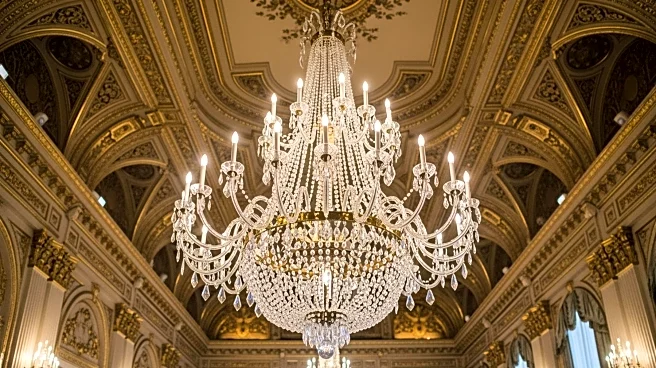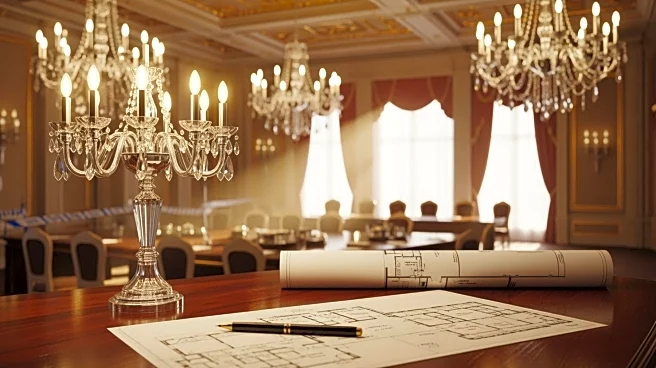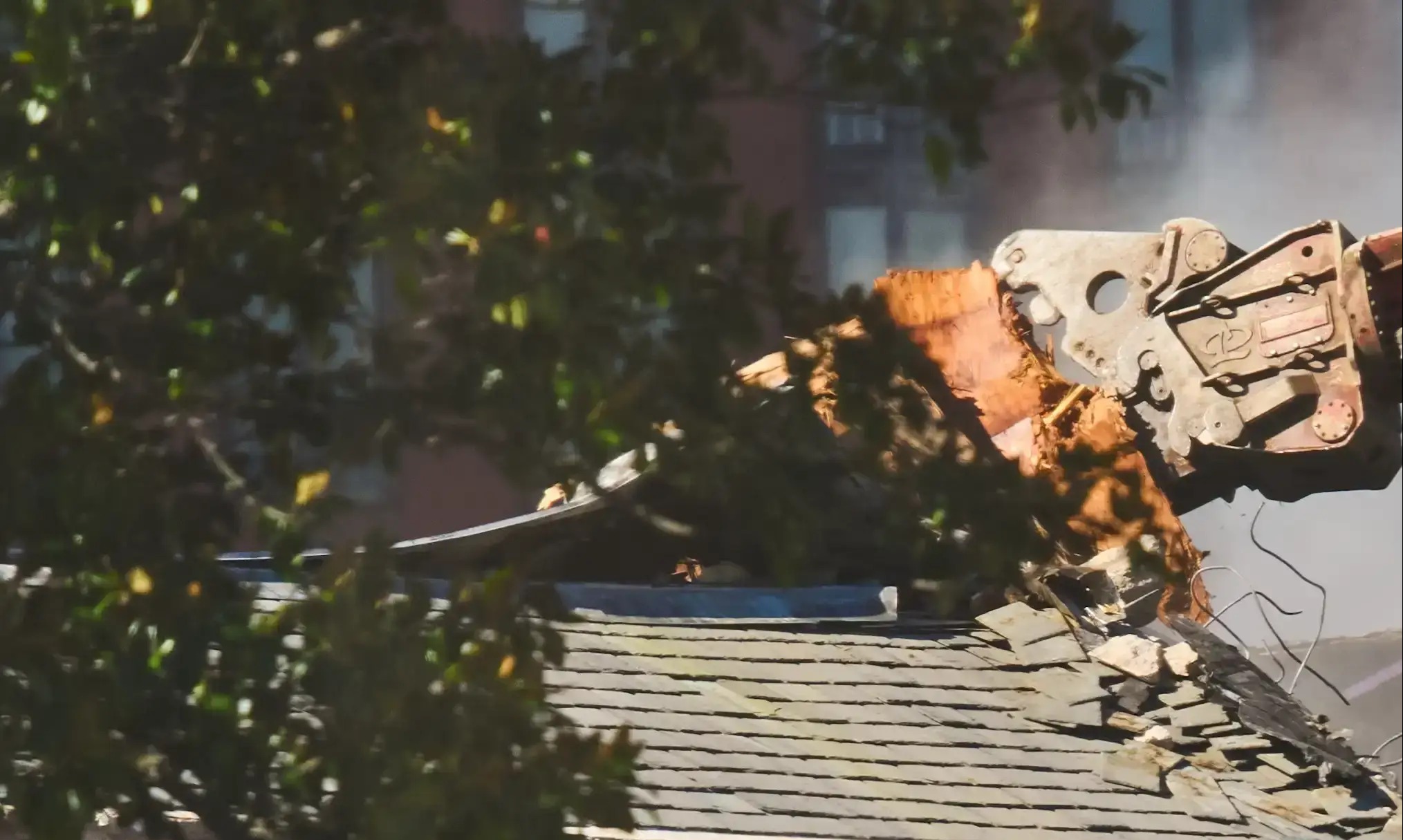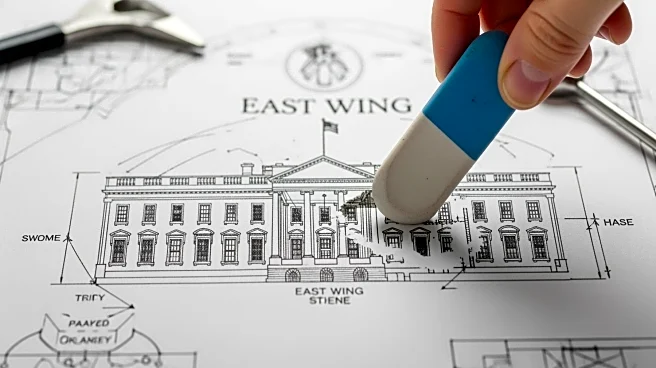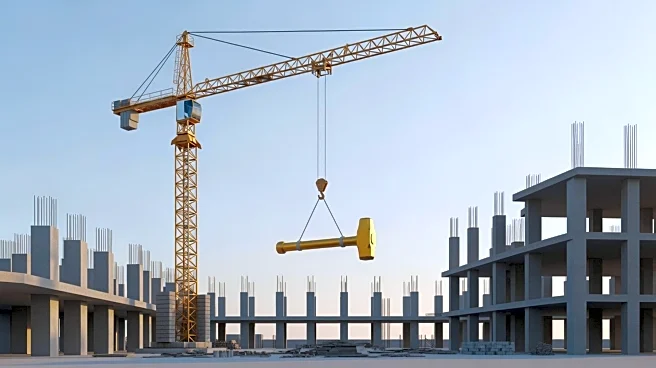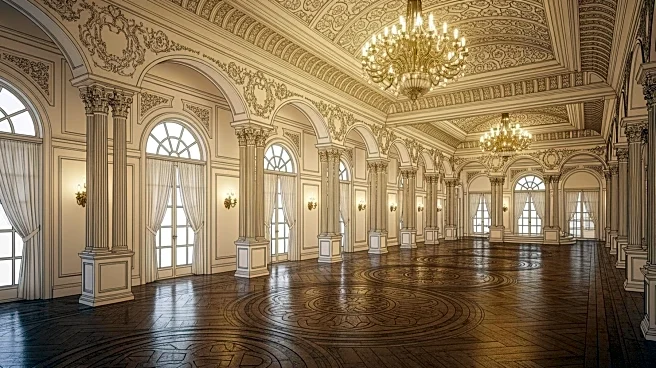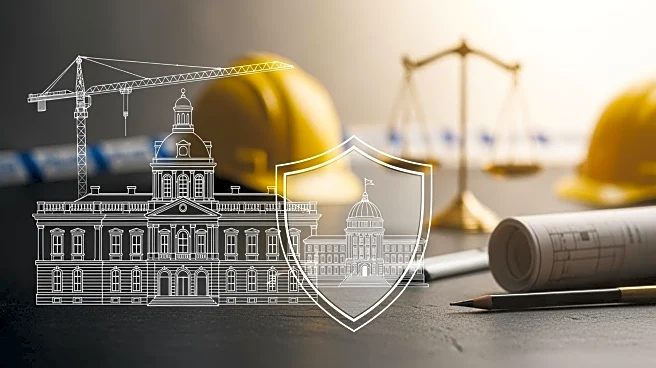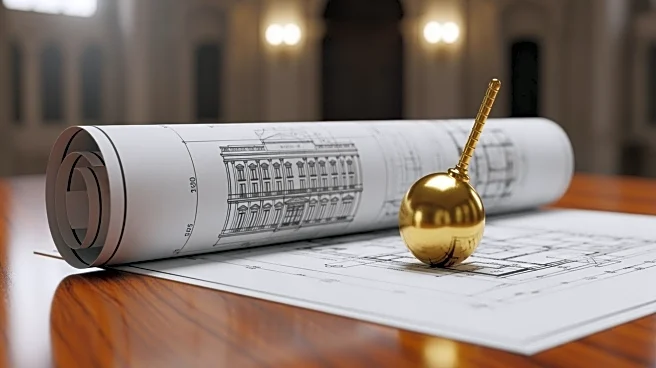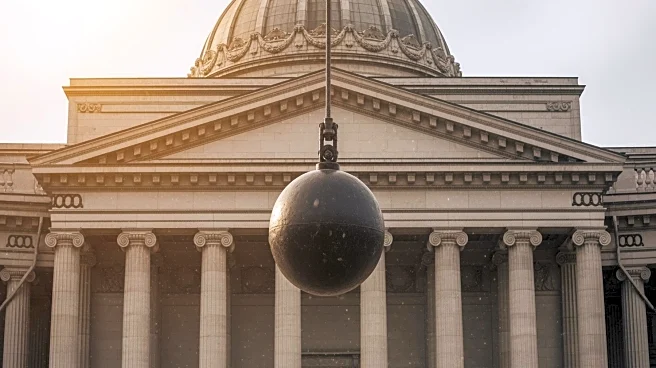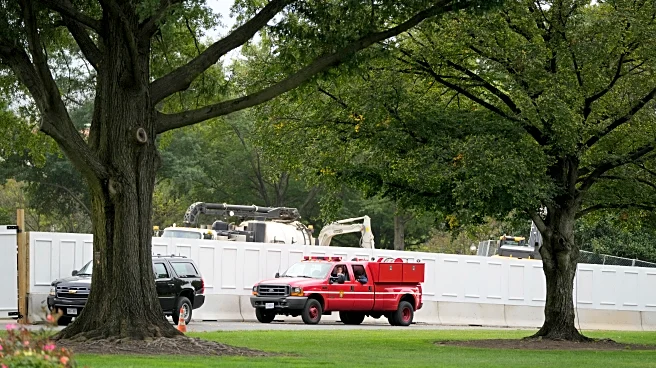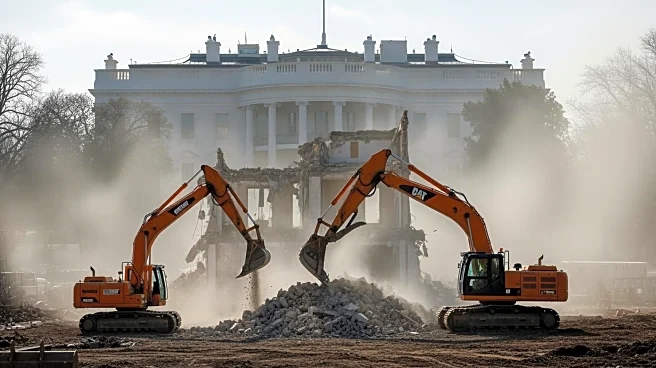What's Happening?
President Donald Trump has commenced the construction of a $250 million ballroom at the White House, a project that has sparked significant attention and controversy. The new ballroom, which will be located
in the East Wing, is set to be nearly double the size of the main White House, accommodating up to 999 people. Despite initial assurances that no demolition would occur, part of the East Wing facade has been torn down to make way for the new structure. President Trump has stated that the project will be funded entirely through private donations, including a $22 million contribution from YouTube as part of a legal settlement. However, the White House has not yet disclosed a comprehensive list of donors. The construction is proceeding without the approval of the National Capital Planning Commission, which typically oversees such projects.
Why It's Important?
The construction of the ballroom is significant as it represents a major alteration to the historic White House, a building that has undergone various changes since its original construction in 1792. The project has raised questions about the use of private funds for public buildings and the transparency of donor contributions. Additionally, the lack of approval from the National Capital Planning Commission highlights potential governance and regulatory issues. The ballroom's construction could set a precedent for future modifications to government buildings, impacting how such projects are funded and approved. The project also reflects President Trump's approach to governance, emphasizing private funding and large-scale projects.
What's Next?
The White House has announced that the ballroom is expected to be completed before the end of President Trump's second term in January 2029. As construction progresses, there may be further scrutiny regarding the project's funding and regulatory compliance. Stakeholders, including political leaders and historical preservationists, may continue to debate the implications of such a significant alteration to a national landmark. The completion of the ballroom could also influence future decisions on White House renovations and the role of private funding in public projects.
Beyond the Headlines
The construction of the ballroom raises broader questions about the balance between modernization and preservation of historical sites. It also touches on the ethical considerations of using private donations for public infrastructure, potentially influencing future policies on transparency and accountability in government projects. The project's resemblance to the ballroom at Mar-a-Lago, President Trump's private club, may also spark discussions about the personalization of public spaces by political figures.
